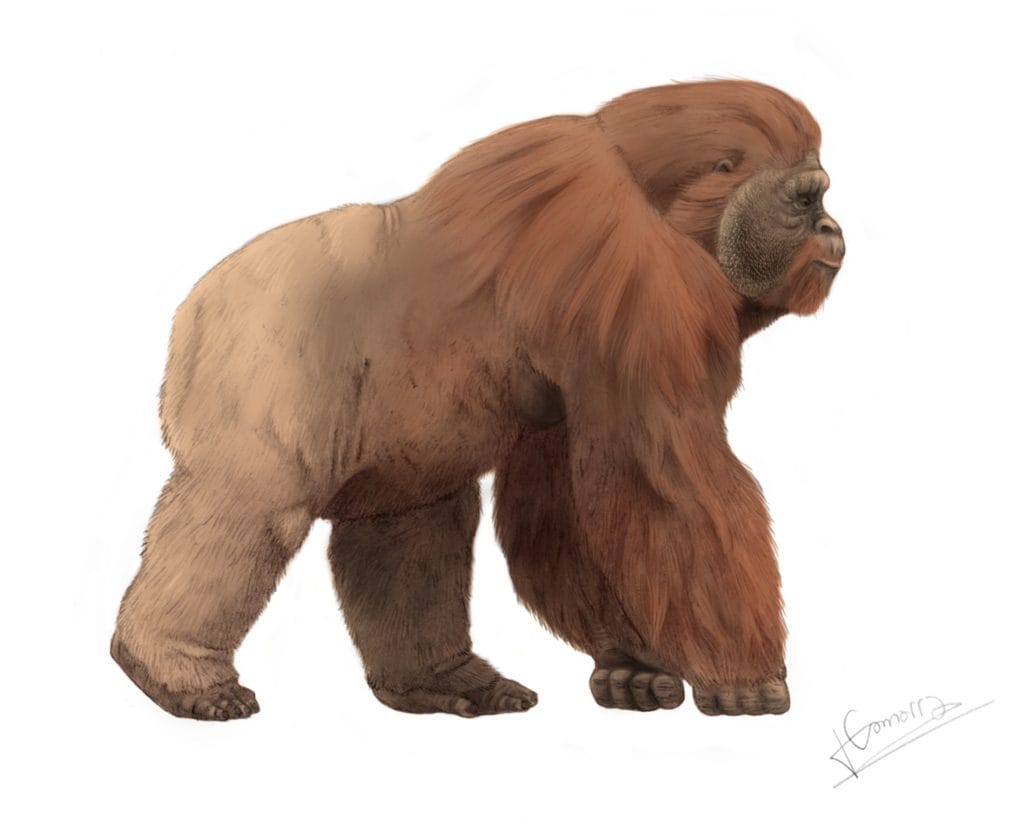New research recently published on Nature attempted to solve one of the greatest unsolved mysteries of modern paleoanthropology by analyzing the few available elements of a somewhat enigmatic ancient primate. An ancient relative of our species lived in China 2 million years ago, but then quickly became extinct 295-215.ooo years ago. It was a big, tall primate up to 3 metersweighing over 250 kg and able to live together with our ancestors for some time Homo erectus. This creature was purely vegetarian and was the largest great ape to have evolved in history until it became extinct shortly before the arrival of Sapiens in the Far East.
Its scientific name is Gigantopithecus blacki and the great mystery surrounding its demise has to do with its hasty and sudden disappearance, unrelated to the classic effects of contemporary climate change or possible human hunting. For decades, paleontologists have tried to understand what drove the species to disappear over the course of several millennia, searching for new finds in areas of southern China. However, the only major finds recovered in over a century were exclusively teeth and a few mandibles, which were found at 22 sites spread over a vast area. Guangxi province.
These findings are practically the only ones available today from research that understood its demise, so a team of Chinese, Australian and American scientists decided to compare them for the first time to understand whether they hide information that previous authors had neglected.
So scientists started trying to extrapolate the new data using 6 different dating methods, useful for dating with some precision every single find available to paleontologists. The result of this dating produced 157 radiometric ages, very important data to understand the trends experienced by this species. However, to supplement the missing data, the researchers also dated several sediments covering the fossils from caves in Guangxi province to obtain environmental data regarding the world in which they lived.
However, the most important types of analysis were those that focused on pollen studieson fauna reconstruction and for analysis stable isotopes of teeth. In fact, based on the results of these tests, the team was able to determine what environmental conditions existed in China at the time of the extinction G. blackihow its populations lived before the crisis and what caused its definitive decline.
The question of diet

As recently as 700-600,000 years ago, the giant pig lived peacefully in the Chinese forests without suffering from any special problems. He was in perfect harmony with the other species, he didn’t end up as a victim due to the size of the predators, and the forest offered him an abundance of fruits and resources from which to live well. During this period, its population was probably also very large, for a primate of its size and nor was he in conflict with other primates or humans.
This point is very important because in the past, to explain its sudden extinction, some theories, now proven wrong, even suggested that the great primate entered into competition with homo erectus, it suffers from a conflict that would lead to its decline in the long run.
After this time, however, the environment became more variable and the climate began to cause the decline of forests and the emergence of new fruit trees. This provoked fundamental change in the structure of forest communities, which began to settle new species of plants and animals. In addition, the plants favored by the giant ape began to disappear from the southern regions of China, and the great primate was forced to bear the consequences of its extraordinary size. “The G. blacki, examining only large fruits, was a specialist par excellence – says one of the authors of the study, Professor Zhang. “However, this ultimately led to his suffering.
As the giant pithecus was unable to feed on the plants to which its mouth was adapted, it slowly began to starve, especially when other species arrived, such as orangutans, which expanded their diet and spread into Southeast Asia. steal food from him.
What finally doomed the gigantic primate was the final disappearance of the trees it was still able to climb, about 295-215,000 years ago. In fact, because it weighs too much, the trees currently found in Chinese forests or other nearby jungles could not support it.
This was the coup de grace that led the species to its ultimate downfall, as it was unable to even evolve to get smaller, having completely adapted – physiologically and metabolically – to being very large and eating some odd species. types of fruit. Among other things, this study showed that gigantopithecus went extinct much earlier than previously thought, and provided new evidence that our species cannot be considered to blame for its disappearance.

